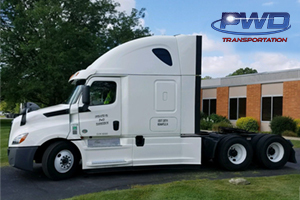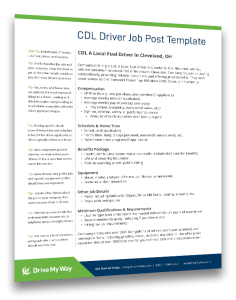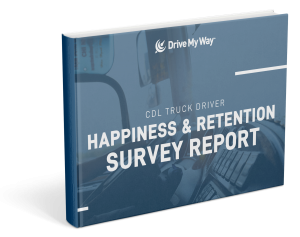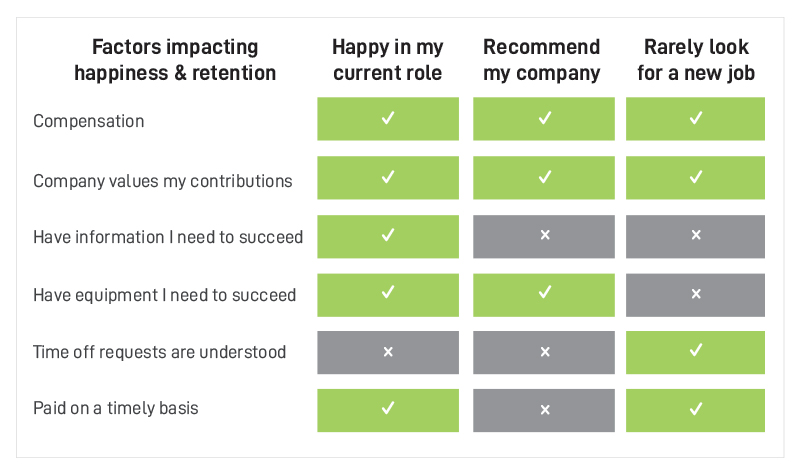
When building a driver recruiter team, experience can’t be overstated. But this doesn’t just mean experience in the recruiting world. Some carriers are finding value in bringing recruiters who have CDL experience into their organization. These recruiters have a knack for building relationships with drivers and turning candidates into hires, which is invaluable for any recruiting department.

Connie Garner, PWD Transportation Recruiter
We spoke with Connie Garner, Recruiter for Drive My Way client, PWD Transportation Inc. and CDL A holder. Connie shared with us how her experience as a CDL driver helps her to be a better driver recruiter.
“I believe the fact that I have my CDL A and was a truck driver is how I’ve been able to recruit and retain a number of drivers. I know the life they live and the struggles they go through on a daily basis,” shared Connie.
Here’s why bringing on recruiters with CDL experience may take your recruiting and retention efforts to the next level.
1. Drivers Trust Recruiters with CDL Experience
This isn’t to say that drivers don’t like or don’t trust recruiters who don’t have CDL experience. Drivers can have great relationships with recruiters of any background. It’s just that drivers will naturally gravitate towards recruiters who have experience as a CDL driver. Trucking is a close-knit community, where you’re more likely to trust people who are in that community than those who aren’t.
Drive My Way’s President and CEO, Beth Potratz, shared her perspective on the value of recruiters who have CDL experience.
Beth Potratz, CEO of Drive My Way
“At the end of the day, drivers have had so many bad experiences and broken promises that they’re almost at a point where they don’t trust. This leads to them to start looking for actual testimonials from other drivers who have actually lives it, to confirm whether or not this is something they want to move forward with,” shared Beth.
2. Trucking Industry Knowledge Goes a Long Way
There’s a common misconception among drivers that recruiters lie on purpose just to get drivers in seats. While it’s true that sometimes drivers aren’t given the correct information, it’s most likely because the recruiter doesn’t have the right information themselves, not because they’re trying to intentionally mislead drivers.
The issue is that there’s a lot of vernacular, slang, and just general knowledge in the trucking industry that isn’t easy to learn right off the bat. This can lead to communication issues when a recruiter is trying to talk to drivers about a job opportunity that ultimately results in unhappy drivers and frustrated recruiters.
For recruiters who have CDL experience, all that industry talk and specific information relating to runs, equipment, and hauls is already second nature to them. Drivers will appreciate speaking with someone knowledgeable of the industry and likely be more comfortable moving forward in the hiring process with your carrier.
3. Building Long-Term Relationships
As any good recruiter knows, relationship building is key. Aside from just being in contact with a driver during the hiring process and then handing them off, CDL recruiters have that unique sense of camaraderie with hired drivers. These relationships can last well after the initial hire and could even be a factor in retaining talented drivers.
“I don’t promise them anything I can’t give them. In the beginning, I didn’t want to be a recruiter, because I had only bad experiences with the ones I worked with. But as a driver turned recruiter, you really have a leg up. Drivers will come into conversations with you much more comfortable and open since they’re with ‘one of their own'”, shared Connie.
Aside from that, recruiters who have CDL experience, will tend to know more people in the industry overall. This can lead to introductions with many great drivers your company wouldn’t have been able to get in front of otherwise.
Having great recruiters in your organization is step one. Step two is finding the solutions that help your recruiters make the right hires. Drive My Way’s patented matching technology will identify top candidates based on your specific job requirements and match them with you.
 PWD Partners with Drive My Way for Success
PWD Partners with Drive My Way for Success
PWD is a third–generation trucking company, delivering the best quality working environment to employees and first–class service to customers.



 With thousands of carriers advertising jobs for truck drivers right now, how do you make sure yours resonates? If you’re recruiting for a smaller carrier, this can be even harder, since you may still be developing brand recognition. That’s not to say that creating a great job advertisement is an impossible task. It can seem daunting, but there are a few simple tips you can use to make sure your ads are getting noticed by the drivers you’re looking for.
With thousands of carriers advertising jobs for truck drivers right now, how do you make sure yours resonates? If you’re recruiting for a smaller carrier, this can be even harder, since you may still be developing brand recognition. That’s not to say that creating a great job advertisement is an impossible task. It can seem daunting, but there are a few simple tips you can use to make sure your ads are getting noticed by the drivers you’re looking for. 





 Being a pet friendly trucking company is more than just a perk for some drivers. Offering a pet rider program strengthens company culture, retention, and recruiting. Ultimately, pet programs are about driver satisfaction and happiness and should be considered part of an overarching retention strategy. With strong marketing that displays a positive company culture, pet programs can also bolster driver recruitment efforts.
Being a pet friendly trucking company is more than just a perk for some drivers. Offering a pet rider program strengthens company culture, retention, and recruiting. Ultimately, pet programs are about driver satisfaction and happiness and should be considered part of an overarching retention strategy. With strong marketing that displays a positive company culture, pet programs can also bolster driver recruitment efforts.  Offering a pet program is a great way to boost driver happiness and
Offering a pet program is a great way to boost driver happiness and 




 Early and often is the best rule of thumb for sharing a safety incentive program with drivers. Set clear expectations at the start so that drivers know how to succeed. Based on your metrics for driver incentives, tell drivers exactly what they need to do. The results should be measurable, so drivers feel it’s a fair and attainable goal. Then, share the program in clear, simple language so there’s no confusion or feeling of mystery!
Early and often is the best rule of thumb for sharing a safety incentive program with drivers. Set clear expectations at the start so that drivers know how to succeed. Based on your metrics for driver incentives, tell drivers exactly what they need to do. The results should be measurable, so drivers feel it’s a fair and attainable goal. Then, share the program in clear, simple language so there’s no confusion or feeling of mystery!  According to Drive My Way’s
According to Drive My Way’s 


 Unfortunately,
Unfortunately, 
 There are several diverse ways you can execute training. You can bring in a trainer and conduct training live and in-person with a large group. In addition, you can offer opportunities for group training online or individualized online training. You want to make sure the delivery matches up well with your
There are several diverse ways you can execute training. You can bring in a trainer and conduct training live and in-person with a large group. In addition, you can offer opportunities for group training online or individualized online training. You want to make sure the delivery matches up well with your 



 To support strong mental health in your fleet, support good dietary and
To support strong mental health in your fleet, support good dietary and  Having strong, healthy relationships is closely linked with positive mental health. That extends far beyond the walls of the home. Build a company
Having strong, healthy relationships is closely linked with positive mental health. That extends far beyond the walls of the home. Build a company 
 National job uncertainty has been a hallmark of 2020. With that in mind, it’s more important than ever to
National job uncertainty has been a hallmark of 2020. With that in mind, it’s more important than ever to  In addition to transparency, consistency is critical during uncertain times. It’s so important that in 2019, Harvard Business Review found that
In addition to transparency, consistency is critical during uncertain times. It’s so important that in 2019, Harvard Business Review found that  Public recognition is most meaningful as a way to connect drivers when it is paired with private or internal recognition as well. Drivers will quickly see through any companies that praise in public and don’t value drivers in private. In addition to external marketing campaigns, take time to reach out to drivers individually.
Public recognition is most meaningful as a way to connect drivers when it is paired with private or internal recognition as well. Drivers will quickly see through any companies that praise in public and don’t value drivers in private. In addition to external marketing campaigns, take time to reach out to drivers individually. 

